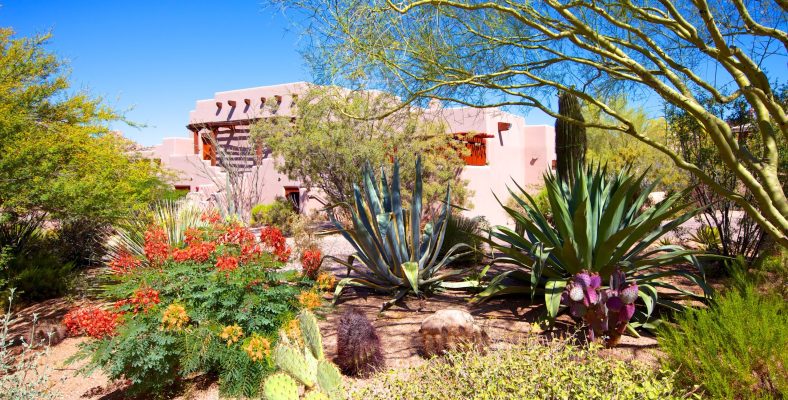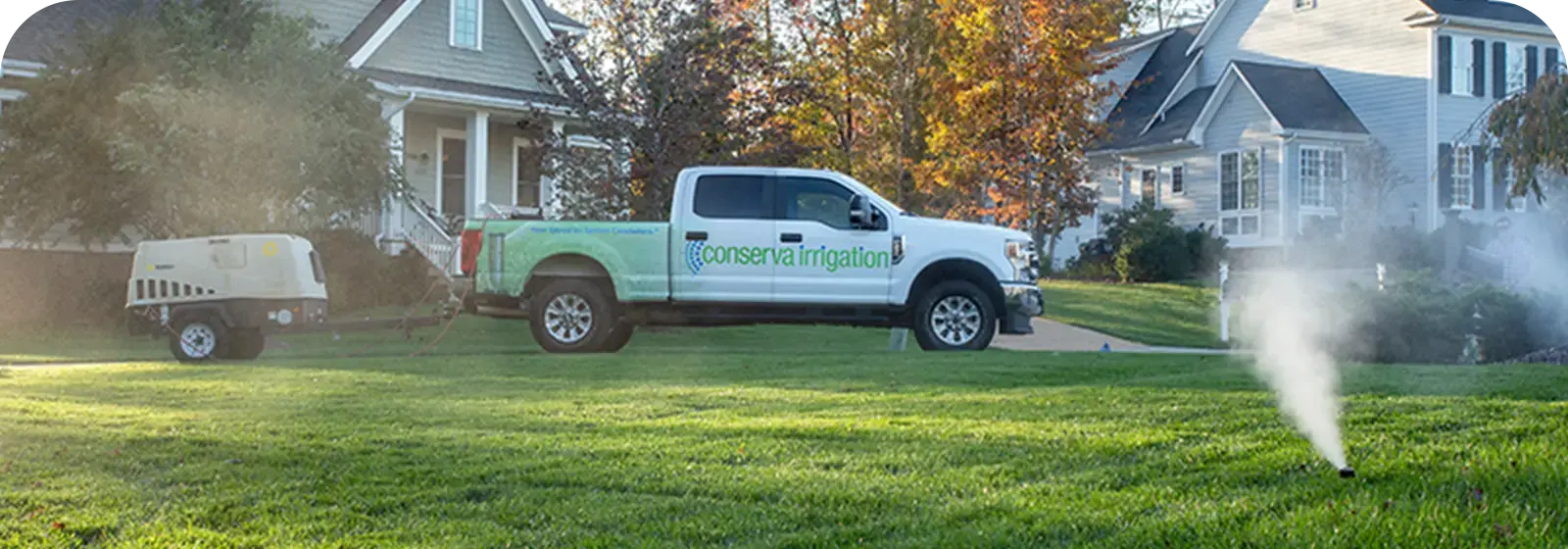Arizona’s arid climate, intense heat, and limited rainfall require thoughtful landscaping choices to ensure that outdoor spaces remain vibrant and sustainable. Low-maintenance plants not only reduce water usage and upkeep costs, but they also provide beauty, shade, and erosion control while thriving in desert conditions.
Choosing the right plants can make a significant difference in the longevity and sustainability of your landscape, especially when paired with an efficient irrigation system. This guide explores the best drought-resistant, low-maintenance plants for Arizona landscapes, ensuring that homeowners and businesses can enjoy lush outdoor spaces with minimal effort.
What Makes a Plant Low-Maintenance?
Not all plants can withstand Arizona’s extreme summer temperatures and low humidity levels. The best low-maintenance plants share the following qualities:
- Drought tolerance – Once established, these plants require minimal watering, making them ideal for desert climates.
- Heat resistance – They can survive prolonged exposure to high temperatures without wilting.
- Soil adaptability – Many low-maintenance plants thrive in Arizona’s alkaline, sandy, or rocky soils.
- Pest and disease resistance – These plants naturally deter common garden pests, reducing the need for chemical treatments.
Selecting plants that naturally adapt to Arizona’s environment reduces the need for frequent watering, fertilization, and pest control measures.
Best Low-Maintenance Plants for Arizona Landscapes
Cacti and Succulents: The Ultimate Drought-Resistant Plants
Cacti and succulents are iconic desert plants that require minimal water and thrive in high temperatures. They add texture and structure to landscapes while requiring virtually no maintenance.
One of the best options is the Golden Barrel Cactus, which has a striking round shape and thrives in full sun with minimal watering. Another excellent choice is Agave Americana, a large, sculptural plant that adds dramatic flair to any xeriscape design. Desert Spoon (Dasylirion wheeleri) is another great addition, featuring slow-growing, spiky leaves that provide modern appeal with little upkeep. If you’re looking for a plant that doubles as a ground cover and a source of edible fruit, consider the Prickly Pear Cactus, which is both drought-tolerant and visually appealing.
These plants require well-draining soil and full sun exposure, making them ideal for rock gardens, entryways, and arid landscapes.
Flowering Plants: Adding Color with Minimal Effort
Many flowering plants struggle in Arizona’s climate, but several heat-tolerant varieties thrive with little care while providing vibrant seasonal color.
Lantana is a standout choice, blooming year-round in shades of yellow, orange, pink, and red while attracting pollinators such as butterflies and hummingbirds. Another great option is Red Yucca (Hesperaloe parviflora), which produces striking red tubular flowers on tall stalks, adding height and visual interest to any landscape. Texas Sage (Leucophyllum frutescens) is another reliable plant, known for its ability to withstand extreme heat and produce beautiful purple flowers after rainfall. For those looking for a classic wildflower, Desert Marigold offers bright yellow blooms that require almost no maintenance.
These flowering plants bring pollinator activity and vibrant color to any landscape while requiring minimal maintenance and irrigation.
Shrubs and Ground Covers: Erosion Control and Shade
Low-maintenance shrubs provide shade, structure, and soil stability, helping to prevent erosion and reduce evaporation.
Chuparosa (Justicia californica) is an excellent choice for homeowners looking to attract hummingbirds, as its red tubular flowers provide an excellent nectar source. If you prefer a more traditional shrub, Creosote Bush (Larrea tridentata) is an excellent option, known for its hardy nature and fragrant leaves that release a fresh scent after rain. Arizona Rosewood (Vauquelinia californica) is a great evergreen shrub that requires little water and offers privacy as a hedge or screen. For ground cover, Trailing Rosemary is an excellent drought-tolerant choice, offering fragrant foliage and erosion control along walkways and retaining walls.
These shrubs and ground covers minimize soil erosion, prevent weed growth, and require little to no pruning.
Best Irrigation Practices for Low-Maintenance Landscaping
Even drought-resistant plants need some level of irrigation, especially when establishing roots. Implementing smart irrigation techniques ensures plants receive just the right amount of water without waste.
Drip Irrigation for Targeted Watering
A drip irrigation system is the most efficient way to keep low-maintenance plants hydrated while conserving water. Unlike traditional sprinklers, which often lead to evaporation and runoff, drip irrigation:
- Delivers water directly to the root zone, reducing evaporation.
- Prevents overwatering, which can be harmful even to drought-tolerant plants.
- Encourages deep root growth, improving plant resilience.
Smart Irrigation Controllers
A smart irrigation system automatically adjusts watering schedules based on real-time weather conditions and soil moisture levels. By using weather-based controllers, homeowners can:
- Prevent unnecessary watering after rainfall or during cooler months.
- Reduce overall water consumption and utility costs.
- Ensure that plants receive just the right amount of water for optimal growth.
Mulching for Moisture Retention
Applying a 2–3 inch layer of mulch around plants helps retain soil moisture, regulate temperature, and suppress weeds. Organic mulch, such as wood chips or shredded bark, decomposes over time, enriching the soil with valuable nutrients.
Pairing low-maintenance plants with efficient irrigation maximizes water conservation while ensuring landscape health.
Designing a Low-Maintenance, Drought-Tolerant Landscape
To create a visually appealing and sustainable desert garden, consider incorporating the following design principles:
- Group plants with similar water needs together to optimize irrigation efficiency.
- Use decorative rock and gravel for ground cover instead of water-intensive lawns.
- Incorporate native plants that attract pollinators and require minimal upkeep.
- Install shaded seating areas under large trees to reduce heat absorption.
By designing landscapes with drought resistance in mind, homeowners can significantly cut down on maintenance while enhancing curb appeal.
Upgrade Your Landscape with Conserva’s Smart Irrigation Solutions
At Conserva Irrigation of Greater Scottsdale, we specialize in water-efficient irrigation systems tailored to Arizona’s unique climate. Our smart irrigation technology ensures that your landscape stays healthy while minimizing water waste.
- Custom irrigation solutions designed for low-maintenance plants.
- Water-saving technology, including drip irrigation and weather-based controllers.
- Expert installation and ongoing maintenance to optimize system performance.
Whether you are installing a new drought-resistant landscape or upgrading an existing irrigation system, we provide professional guidance and sustainable solutions.
Schedule a consultation today to enhance your Arizona landscape with efficient, low-maintenance irrigation.


